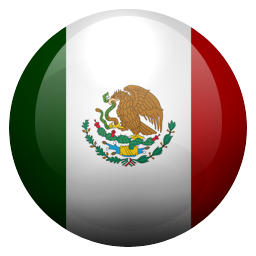Abstract
This article focuses on the urban and architectural scope of foreign investment in the peninsula of Baja California in Mexico and strengthens the idea of modernization in an inhospitable territory rich in mineral resources. Here we analyze the construction of a city that develops into a new kind of urbanism and industry by concentrating raw material, labor, and finished products for export. The consolidation of the mining company leads to the foundation of a new city: Santa Rosalía, whose urban development follows a common pattern based on the direct connection between residence and work. Santa Rosalía shows a clear social segregation with difficult working conditions, which were characteristic of the industrial revolution in the country. In the mid-twentieth century, the city is at its economic peak, but mineral depletions start appearing in the most productive mines and the population systems. The entrance to the post-industrial period, the company's bankruptcy, and its abandonment call for an urban regeneration from economic decline in order to acknowledge and recover valuable industrial heritage that still exists yet is currently in decay.
References
ALVAREZ, M.Á. (2011). ‘’Conservación y restauración del patrimonio industrial en el ámbito internacional’’. Revista de cultura y ciencias sociales. ABACO 2da época No. 70. Pp 22-39. Gijón [Asturias] España.
BERSTEIN, M. (1964). The Mexican Mining Industry 1890-1950: a Study of Interactions of Politics, Economics and Technology. State University of New York, 1964.
BROWN, B. (2009). Introducción e impacto del ferrocarril en el Norte de México. Universidad Autónoma de Ciudad Juárez. pp 231–236. Ciudad Juárez [Chihuahua] México 2009.
CERUTTI, M. (2008). ”La Enciclopedia de Monterrey’’. El Norte agringado, pp.125-142. Monterrey [Nuevo León] México: Editorial Grupo Milenio.
CICHOWICZ, J. (1973). The economic evolution of a mining community: Santa Rosalía, Baja California Sur, Mexico, pp 1-78. The Departament of Geography Oregon State University. Oregon [United States]: Oregon Press.
GARCÉS, E. (1999). Las ciudades del salitre. Un estudio de las oficinas salitreras en la región de Antofagasta. Universidad del Norte. Santiago [Chile]: Editorial Universitaria.
GARCÉS, E. (2003). “Las ciudades del cobre”. Del campamento de montaña al hotel minero como variaciones de la company town. EURE, 29(88), 131-148. Santiago [Chile].
JORDÁN, F. (1956). “El otro México”. Biografía de Baja California. Instituto de Investigaciones Históricas de Baja California.Tijuana [Baja California] México, 2010.
KORTHEVER, D. (2001). Santa Rosalia and Compagnie du Boleo: The making of a town and company in the porfirian frontier 1885-1900. Irvine [California] United States: University of California Irvine Press.
PADILLA, A. (1989). El surgimiento urbano de Santa Rosalía Baja California Sur. pp. 1-16. Tijuana [Baja California] México: Universidad Nacional Autónoma de México, Instituto de Investigaciones Históricas de Baja California.
NOVELO, M.E. (1988). “A history of Santa Rosalía in Baja California”. San Diego [California] United States: San Diego History Center, Institute of History of California.
QUIROZ, H. (2008). Ciudades Mexicanas del siglo XX. Ciudad de México : Universidad Nacional Autónoma de México, Facultad de Arquitectura. pp. 23-197.
ROMERO, M. (1991). “El Boleo, un pueblo que se negó a morir: 1885-1954”. Hermosillo, Editorial Unísono. Centro de estudios mexicanos y centroamericanos. pp.47-110. Ciudad de México 1991.
Sabaté, J. (2004). “Paisajes Culturales. El patrimonio como recurso básico para un nuevo modelo de desarrollo.’’ DU Y OT. Urban 9. Primera época. pp.8-29. Barcelona [Cataluña] España.
SARIEGO, J.L. (1992). Minería y territorio en México: tres modelos de implantación socio espacial. Fondo de Cultura Económica. ERIA. pp. 197-209.
A Labor e Engenho utiliza a licença do Creative Commons (CC), preservando assim, a integridade dos artigos em ambiente de acesso aberto.

